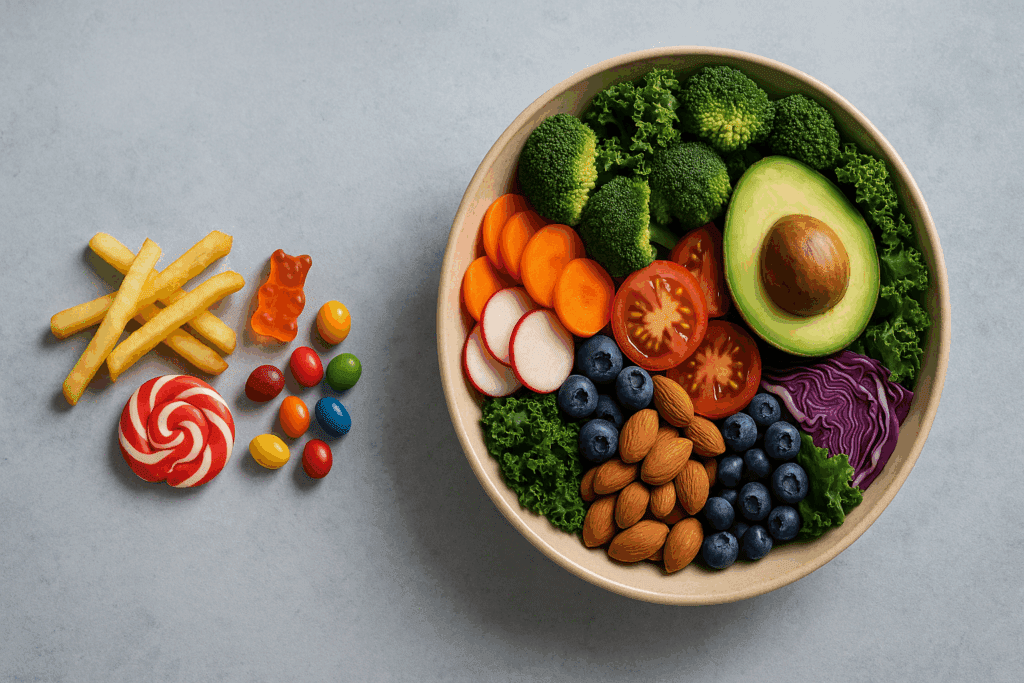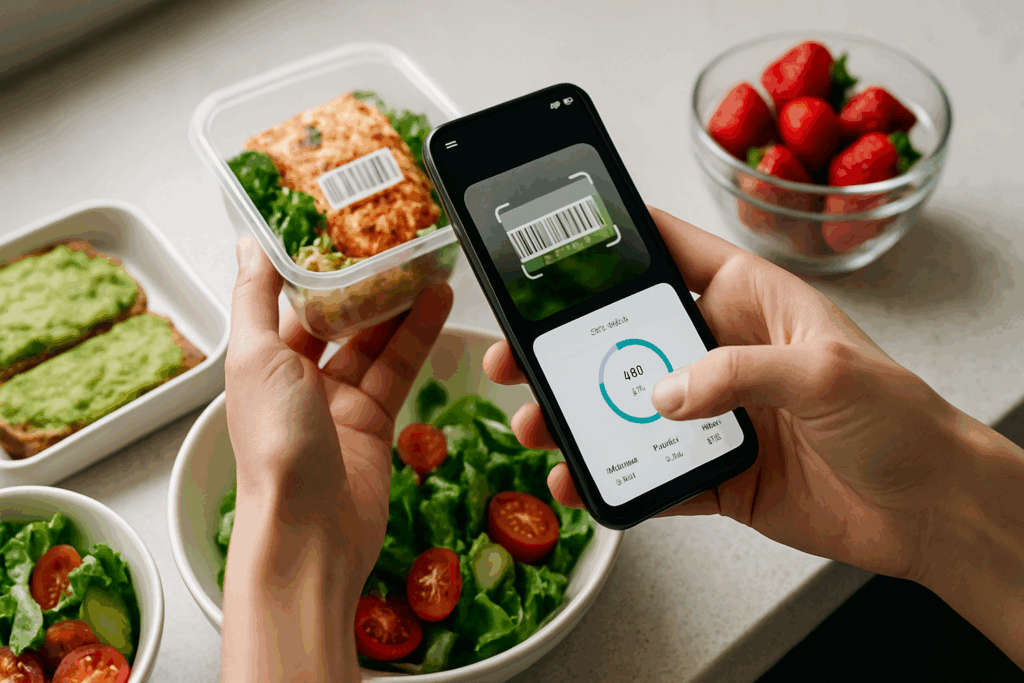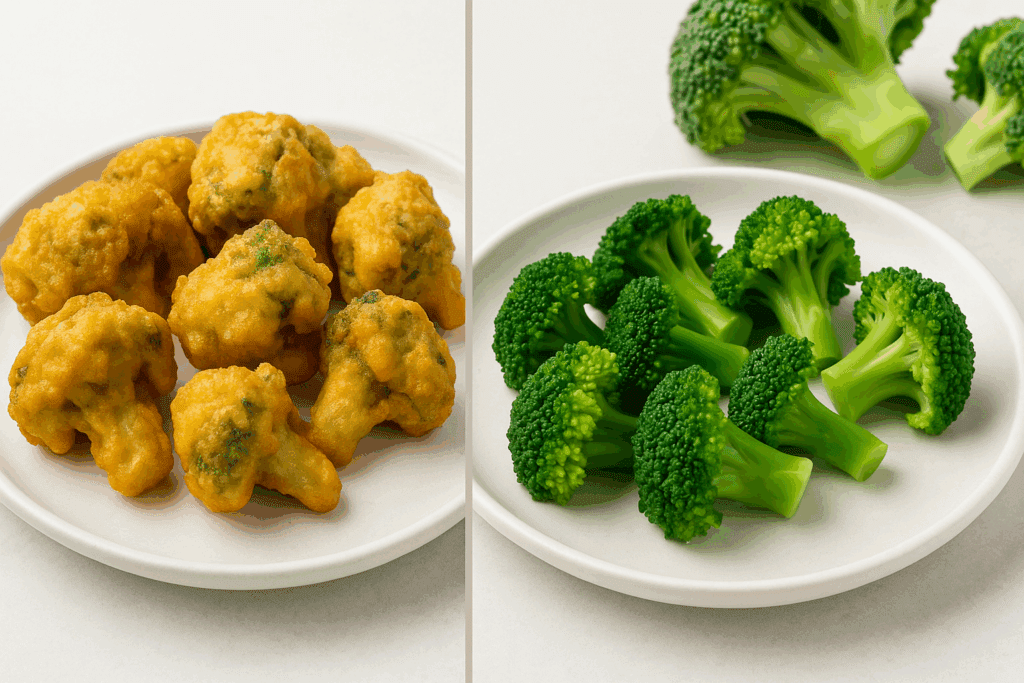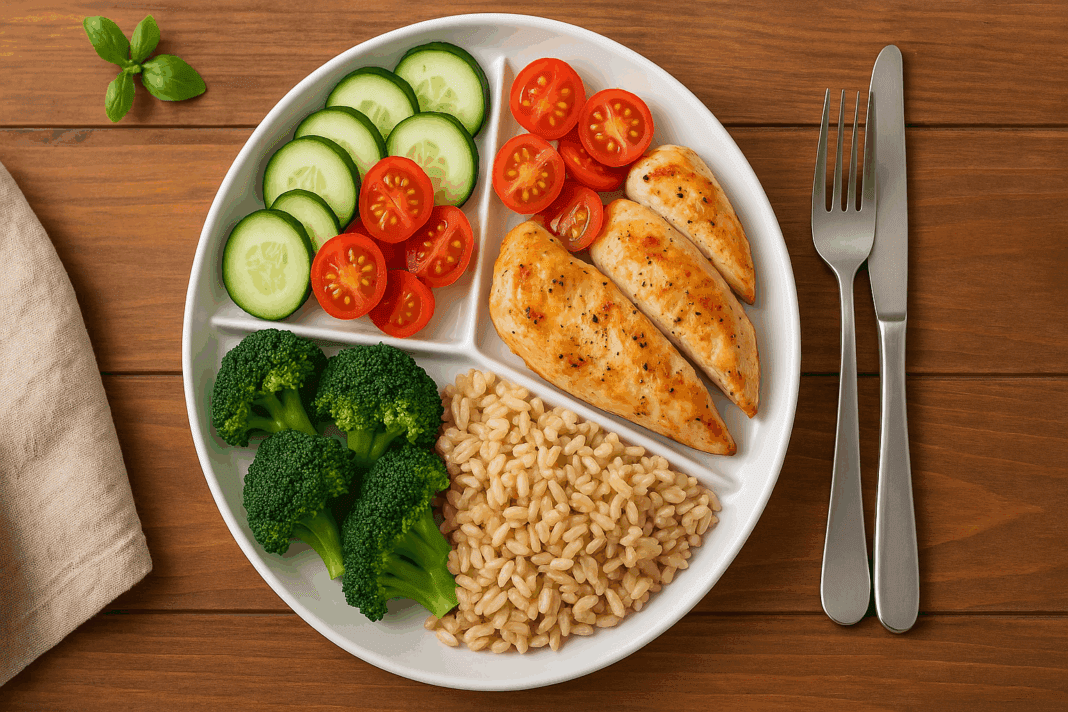Understanding how many calories are in a meal is fundamental to building a healthy, sustainable approach to nutrition. With rising concerns about obesity, metabolic diseases, and the increasing prevalence of lifestyle-related conditions, knowing how to estimate meal calories accurately is not just a dietary skill—it’s a cornerstone of long-term health literacy. While calorie counting is not new, the science and strategy behind it have evolved dramatically. Today, modern dietetics emphasizes not only how much you eat, but what you eat, when you eat, and how that food interacts with your unique physiology.
You may also like: 4 Ways to Have a Healthy Diet: Expert Tips Backed by Science for Better Nutrition and Long-Term Wellness
The phrase “calories in a” meal isn’t just a number on a food label—it’s a complex calculation influenced by portion size, macronutrient composition, preparation methods, and even how your body digests and absorbs food. In fact, the same 500-calorie dish can have very different metabolic effects depending on its ingredients. Whether you’re aiming to lose weight, build muscle, manage a chronic condition, or simply eat for energy and vitality, understanding the calorie content in meals gives you a greater sense of agency over your health decisions. The ability to accurately gauge how much calories are in a meal allows you to fine-tune your diet with precision rather than guesswork.

Calories themselves are units of energy. They represent the amount of energy your body can derive from consuming food and drink. The average adult requires anywhere between 1,800 to 3,000 calories per day, depending on age, sex, weight, height, activity level, and individual health goals. Knowing how to transition from total daily calorie recommendations to calories per meal is an essential next step. For example, if your goal is to consume 2,100 calories a day across three meals and a snack, you might allocate 600 calories to breakfast, 700 to lunch, 600 to dinner, and 200 to a small snack. However, this is just a framework, not a rule—your individual needs might shift based on physical activity, hunger levels, and lifestyle factors.
To estimate how many calories are in a meal, you first need to understand what contributes to those calories. Each gram of protein and carbohydrate provides about 4 calories, while each gram of fat delivers 9. Alcohol, though not a nutrient, contributes 7 calories per gram. These basic nutritional facts form the foundation for any calories-to-food-calories calculation. When assessing a meal, consider the quantity and quality of each macronutrient. For instance, a grilled chicken salad with olive oil dressing might offer 30 grams of protein, 20 grams of fat, and 10 grams of carbs—adding up to roughly 410 calories. But add croutons, cheese, or a sugary dressing, and the calorie count can double quickly. Thus, calorie awareness is not just about counting—it’s about critical thinking.

Portion size is arguably the most common culprit in calorie misjudgment. Restaurant meals, in particular, tend to be significantly larger than standard portion sizes, often containing well over 1,000 calories per dish. This discrepancy between perceived and actual intake underscores the importance of visual cues and measurement strategies. Learning to compare servings to everyday objects—a cup of pasta being roughly the size of a baseball, for example—can help you develop a mental library of portion standards. Investing in a kitchen scale or using measuring cups at home can also offer valuable insight into what a true serving looks like, especially when starting out.
Food labeling can be both an ally and a challenge in estimating meal calories. While packaged foods in many countries are required to display nutrition facts, these labels often reflect the calories in a single serving rather than the entire package. Misreading this information can lead to significant underestimation. Moreover, labels may not fully capture the complexity of how your body processes certain foods. For example, whole grains and fiber-rich foods tend to be metabolized differently from refined carbohydrates, leading to differences in satiety and insulin response, even when the calorie count appears the same. This is one reason why experts stress not just focusing on how many calories are in a meal, but also the nutrient density of that meal.

When eating out or consuming meals without nutrition labels, estimating calorie content becomes a bit more art than science—but it’s still manageable. A practical approach involves breaking down the dish by components. Consider a burrito: the tortilla might contribute 200 calories, the rice 150, the beans another 150, cheese and sour cream 200, and the meat filling another 250, pushing the total close to 1,000 calories. Being able to mentally deconstruct your plate in this way helps transition raw calories to food calories that you can use to inform your choices.
Understanding hidden sources of calories is another critical element. Sauces, dressings, beverages, and condiments can quietly inflate a meal’s caloric load. A tablespoon of mayonnaise adds around 90 calories, while a 12-ounce soda brings over 150 empty calories to the table. These seemingly small additions often fly under the radar but can substantially affect daily totals. Therefore, cultivating mindfulness around “calories in a” condiment or side can make the difference between staying within your target range or overshooting it consistently.
It’s also vital to recognize the limitations of relying solely on calorie counts. Not all calories behave the same way in the body. Calories from added sugars can spike blood glucose levels and increase fat storage, while calories from high-fiber vegetables promote satiety and steady energy release. This is where the conversation shifts from quantity to quality. Optimizing the quality of your calories ensures that you’re not just meeting energy needs but also nourishing your body with vitamins, minerals, antioxidants, and phytonutrients. The phrase “calories to food calories” takes on deeper meaning here—it’s not just a numerical exchange, but a nutritional negotiation.

Modern technology has made it easier than ever to track and estimate calories. Apps like MyFitnessPal, Cronometer, and Lose It! allow users to log meals, scan barcodes, and view macronutrient breakdowns instantly. While these tools offer convenience, they should be viewed as approximations rather than absolutes. Variables like cooking methods, brand differences, and biological variability mean that no calorie count can ever be 100% precise. However, these tools do offer structure and feedback, especially for those new to nutritional tracking or those working with specific goals in mind.
Another crucial layer is the role of hunger and fullness cues. Calorie tracking can sometimes lead to rigid thinking that overrides your body’s natural regulatory signals. Learning to listen to your hunger—not just your app—is an advanced skill that complements numerical awareness. Intuitive eating encourages this self-awareness, helping individuals reconnect with their internal hunger signals and avoid overeating or undereating. Integrating intuitive practices with calorie knowledge allows for a more flexible and sustainable approach to nutrition.
Meal timing and composition also influence how your body processes calories. Eating protein-rich meals earlier in the day, for instance, has been linked to better appetite control and improved metabolic markers. Similarly, spacing meals evenly rather than engaging in erratic eating patterns can help regulate blood sugar and insulin levels. When thinking about how much calories are in a meal, it’s not just about the numbers—it’s about when and how those numbers are delivered to the body.
Cultural influences, food accessibility, and socioeconomic status also play a role in how people perceive and manage calories. In some communities, high-calorie, low-nutrient foods are more affordable and widely available than fresh, whole options. Addressing calorie literacy in a vacuum without considering these broader determinants of health can lead to advice that is neither practical nor equitable. Public health initiatives must take into account not only the science behind calories but also the social context in which people are making food choices.
Weight management is one of the most common reasons people seek to understand how many calories are in a meal. Creating a caloric deficit—where you consume fewer calories than you burn—is the foundation of most fat-loss strategies. However, sustainability is key. A modest, consistent deficit of 250–500 calories per day is often more effective than aggressive restriction, which can lead to rebound weight gain and metabolic slowdowns. On the flip side, those seeking to gain weight or build muscle may need a caloric surplus, focusing on nutrient-rich, high-calorie meals that support tissue growth and recovery.
The psychological aspects of calorie awareness shouldn’t be overlooked. For some, tracking can promote a sense of empowerment and control. For others, it may trigger obsessive tendencies or disordered eating behaviors. Striking a balance is essential. Nutrition should serve as a tool for vitality, not a source of stress. Working with a registered dietitian or health professional can provide personalized guidance, especially for individuals with a history of eating disorders or metabolic health concerns.
As food marketing becomes increasingly sophisticated, consumers must be cautious of how calories are presented. Phrases like “low-calorie,” “light,” or “guilt-free” can be misleading, often masking products that are still high in sugar, sodium, or saturated fat. Reading beyond the front-of-package claims and diving into the nutrition label and ingredient list is critical for making informed choices. This is where the concept of translating “calories to food calories” comes into play—transforming marketing messages into actionable nutrition data.
Cooking at home provides one of the best opportunities to take control of your caloric intake. When you prepare meals yourself, you can choose high-quality ingredients, control portion sizes, and experiment with cooking methods that enhance flavor without excess fat or sugar. Grilling, steaming, and baking tend to preserve nutritional integrity while minimizing unnecessary calories. By preparing your own meals, you gain firsthand experience in identifying exactly how many calories are in a meal and adjusting recipes to align with your goals.
Teaching children and adolescents about calorie content and portion size is another avenue for fostering lifelong healthy habits. Educational programs in schools, coupled with parental modeling, can cultivate an early understanding of food energy, hunger cues, and nutrient density. Age-appropriate lessons that focus on balance, rather than restriction, can help prevent childhood obesity while also supporting physical and cognitive development.
In clinical settings, calorie estimation plays a crucial role in managing chronic diseases such as diabetes, cardiovascular disease, and kidney disorders. Medical nutrition therapy often involves detailed calculations of macronutrient needs and meal planning strategies tailored to the individual’s condition. In these cases, knowing the calorie and nutrient profile of each meal becomes a therapeutic tool, helping to manage symptoms, prevent complications, and improve quality of life.
Ultimately, calorie awareness is about more than numbers—it’s about cultivating a deeper relationship with food. Whether you’re reading a label, deconstructing a restaurant entrée, or preparing a meal from scratch, understanding the principles behind calorie estimation empowers you to make choices that align with your health goals. In a world saturated with conflicting dietary advice, this foundational knowledge provides clarity, confidence, and control.
Conclusion: Turning Calorie Knowledge into Confident Food Choices
Understanding how many calories are in a meal is more than a numerical exercise—it’s a transformative tool for health, longevity, and informed decision-making. When you can evaluate calories in a food, meal, or snack with both precision and perspective, you bridge the gap between abstract nutrition theory and daily practice. Recognizing how much calories are in a meal allows you to tailor your diet to your unique biological needs, energy requirements, and lifestyle.

Frequently Asked Questions (FAQ): How Many Calories Are in a Meal?
1. Can emotional eating significantly affect how much calories are in a meal?
Absolutely. Emotional eating often involves high-calorie, low-nutrient foods consumed in larger-thannormal portions. People under stress, sadness, or boredom may eat impulsively, overlooking how much calories are in a meal and consuming more than intended. Emotional states can dull hunger cues and override fullness signals, leading to unintentional overconsumption. Over time, this behavior can make it difficult to accurately assess the true number of calories in a meal, especially if food is used as a coping mechanism. Recognizing emotional triggers and developing non-food-based coping strategies can help maintain a healthier relationship with food and restore awareness around calories in a typical eating experience.
2. How do cooking techniques influence calories in a meal?
Cooking methods can significantly alter the calories in a meal without changing the core ingredients.Frying, for example, adds considerable fat and energy density due to oil absorption, while grilling or steaming tends to preserve nutrients without inflating calorie counts. Even subtle changes, such as sautéing vegetables in butter versus olive oil, can shift how much calories are in a meal. It’s also important to note that caramelizing or reducing sauces concentrates sugars and calories. By being mindful of cooking styles and exploring lower-calorie alternatives, you can improve the nutrient profile and minimize excess calories to food calories ratio.
3. Why do calorie needs vary so much between individuals?
While the average person may consume a similar number of calories in a meal, individual needs canvary widely due to metabolic rate, activity level, age, hormonal status, and body composition. Someone with more lean muscle mass burns more calories at rest, which alters how many calories to food calories they require daily. Additionally, certain health conditions, such as hyperthyroidism or insulin resistance, can increase or decrease energy needs respectively. That means even if two people eat the same meal, the way their bodies process and utilize those calories will differ. Understanding your unique metabolic profile can help personalize portion sizes and nutrient distribution.
4. How do cultural eating habits impact our perception of calories in a meal?
Cultural norms shape how meals are structured, portioned, and valued—often influencing perceptionsabout what constitutes a satisfying meal. In some cultures, large communal meals are the norm, making it harder to track how much calories are in a meal due to shared plates and varying serving sizes. Others may emphasize minimalism, where calorie density is naturally lower. Understanding these nuances allows for greater flexibility and respect for cultural diversity while still promoting calorie awareness. This also helps people translate calories to food calories more intuitively within the context of their own traditional eating practices.
5. Are wearable devices accurate in estimating how much calories are in a meal burned post-consumption?
Wearable fitness trackers offer rough estimates of calories burned, but they’re far from precise,especially when it comes to evaluating how much calories are in a meal that has just been consumed. These devices typically rely on heart rate, motion sensors, and demographic data, which don’t capture individual variations in digestion, absorption, or thermogenesis (the energy used to process food). For example, meals rich in protein require more energy to metabolize than high-carb meals, affecting the calories to food calories ratio post-meal. Although helpful for trend tracking, wearables should be used alongside other tools and not relied upon as exact calorie accounting devices.
6. Can meal sequencing change how your body processes calories in a meal?
Yes, the order in which you eat your food can influence glucose response and satiety, therebyaffecting how calories in a meal are metabolized. Studies suggest eating vegetables and proteins before carbohydrates can slow digestion and reduce blood sugar spikes. This pattern may help your body better utilize nutrients and avoid fat storage from rapid insulin surges. While it doesn’t change the number of calories in a dish, it can shift how those calories are absorbed and used. This makes meal sequencing a useful tactic in modifying the functional effect of calories to food calories on your metabolism.
7. How does sleep deprivation influence how much calories are in a meal you end up consuming?
Sleep plays a crucial role in appetite regulation and metabolism. When sleep is restricted, thehormones ghrelin (hunger) increases, while leptin (satiety) decreases, which can lead to eating more than you typically would. This hormonal imbalance often drives cravings for calorie-dense, high-sugar foods, inflating how much calories are in a meal chosen under sleep-deprived conditions. Additionally, tiredness impairs decision-making, making it more likely you’ll choose larger portions or eat mindlessly. In the long run, this disrupts the balance between calories to food calories intake and actual energy expenditure, contributing to weight gain and metabolic dysfunction.
8. Do beverages significantly contribute to calories in a meal?
Yes, beverages are often overlooked but can contribute hundreds of calories to a single meal. Sugarydrinks, creamy coffee beverages, alcohol, and even smoothies can significantly increase how much calories are in a meal without adding satiety. Unlike whole foods, liquid calories bypass some of the body’s hunger regulation mechanisms, meaning they’re consumed quickly and often without compensation later in the day. Understanding the role of drink choices in your meal helps refine your perception of total calories to food calories, especially when trying to manage weight or blood sugar. Opting for water, herbal tea, or unsweetened drinks is a simple way to lower caloric load.
9. How can understanding food volume versus calorie density improve meal planning?
Recognizing the difference between food volume and calorie density helps you create meals that aresatisfying yet calorie-conscious. For example, you can eat a large bowl of leafy greens, lean protein, and steamed vegetables for fewer calories than a small serving of pasta with cream sauce. This awareness helps regulate how much calories are in a meal while maintaining feelings of fullness and enjoyment. By choosing high-volume, low-calorie foods, you optimize the calories to food calories ratio in favor of nutrient density and appetite control. This approach is especially helpful for those trying to reduce caloric intake without feeling deprived.
10. Are there any innovations that help people estimate how much calories are in a meal more accurately?
Emerging technologies like AI-powered food recognition apps and smart kitchen scales are making iteasier to estimate how much calories are in a meal with greater precision. These tools can analyze food images, weigh ingredients, and cross-reference extensive nutritional databases to give users tailored feedback. While still evolving, they represent a shift toward automating the conversion of calories to food calories in real time. These innovations may reduce reliance on manual tracking and improve accessibility for people with busy lifestyles or limited nutrition knowledge. As these technologies advance, they’re expected to become key allies in personal health management and preventive care.

The journey from estimating “calories to food calories” is not about perfection but progress. It involves learning how to read your body’s signals, decipher food labels, and build meals that are both satisfying and nourishing. By applying expert insights and evidence-based strategies, you can move beyond diet trends and create a sustainable eating pattern that supports your long-term wellness. In doing so, you become an active participant in your health—one mindful meal at a time.
Further Reading:
9 Tips to Measure and Control Portion Sizes


